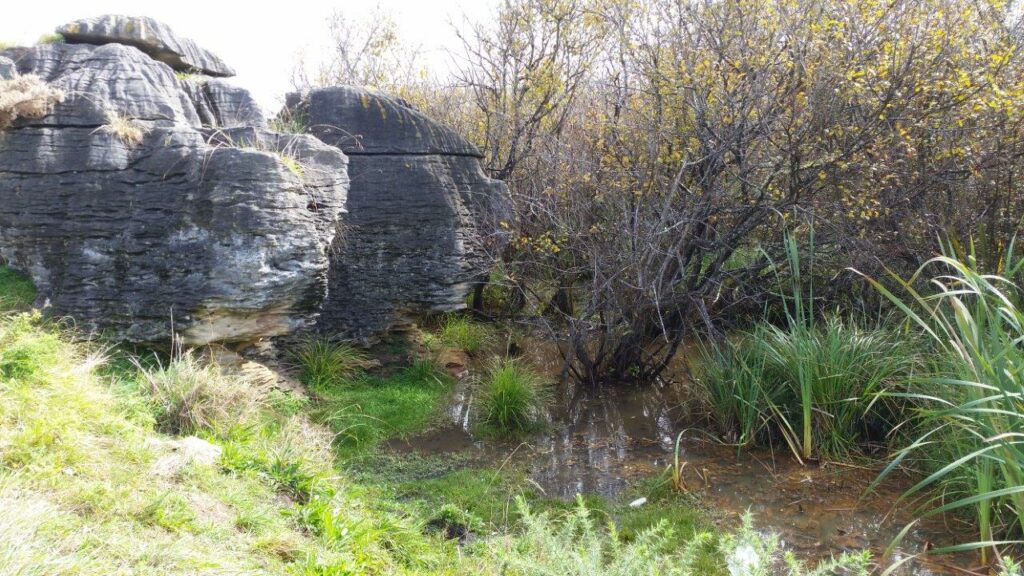Types of Wetlands
Wetlands are places where water sits long enough, and often enough, to alter the soil, vegetation and animal communities that live there. They include permanently or intermittently wet areas, shallow water, and land water margins that support a natural ecosystem of plants and animals adapted to wet conditions.
They are diverse ecosystems, with the different types determined by their water amount, depth, permanence, temperature, the chemicals found there and its source; whether groundwater, surface water, rainwater or a combination.
New Zealand wetlands include:
- Swamps, bogs and tarns
- Lakes, rivers and streams
- Estuaries and intertidal areas
- Geothermal pools
- Underground wetlands
A national classification of New Zealand wetlands includes the full range of wetland types covered by the Ramsar Convention on Wetlands, and is presented in the book Wetland types in New Zealand (2004).
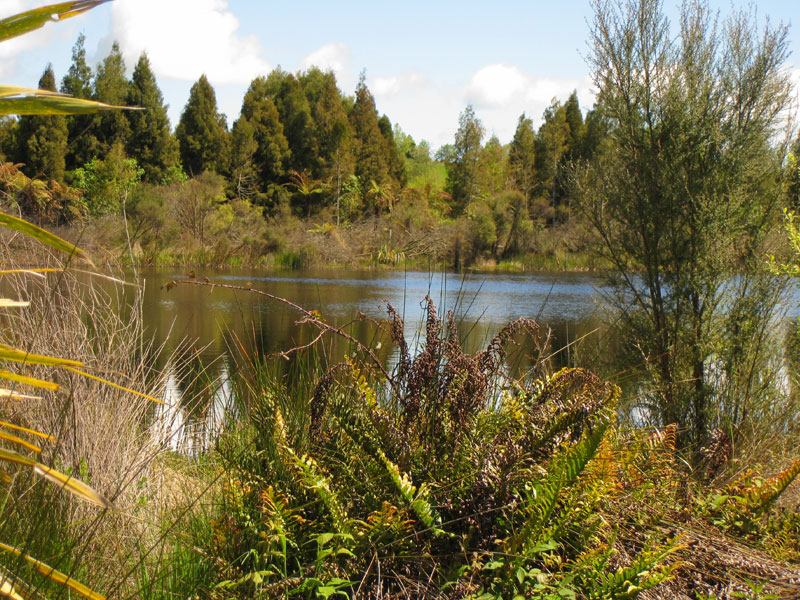
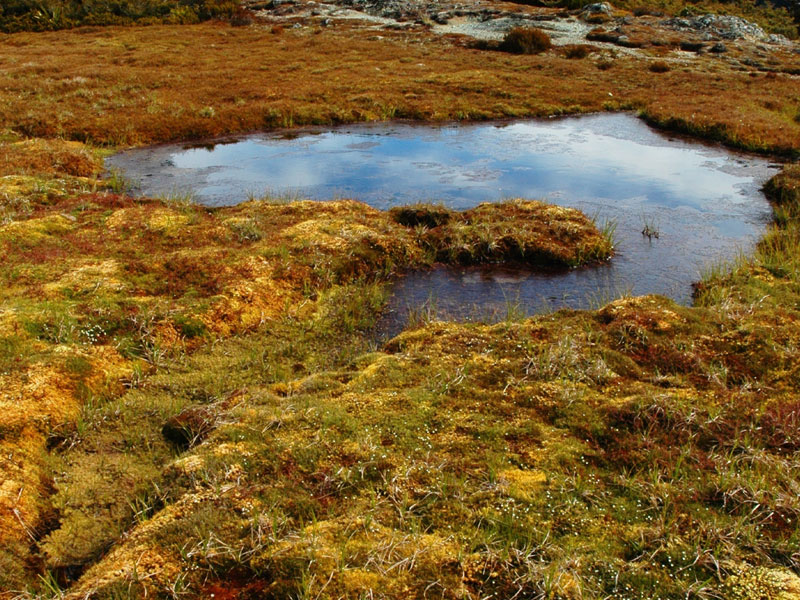
In brief these are:
Bogs
Bogs receive all their water from rain, so they are not enriched by nutrients from adjacent land or underlying mineral soils. Being almost constantly waterlogged, they are poorly aerated and usually acidic. They support a unique community of plants including mosses, lichens, cushion plants, jointed rushes, wire rush, giant cane rush, orchids, sundews, and yellow and silver pine.
They also host fernbirds and a rare moth found only in the stems of giant cane rush in Waikato bogs. Bogs are extensive in Southland, Westland, the Chatham Islands and the Waikato, but now rare in Northland.
Fens
Fens have a peaty substrate, but being on slight slopes or at the edges of raised bog they receive groundwater and some nutrients from adjacent mineral soils and are slightly higher in nutrient status than bogs.
Fen vegetation includes tangle ferns, Macherina sedges, tall herbs, tussock grasses, or manuka.
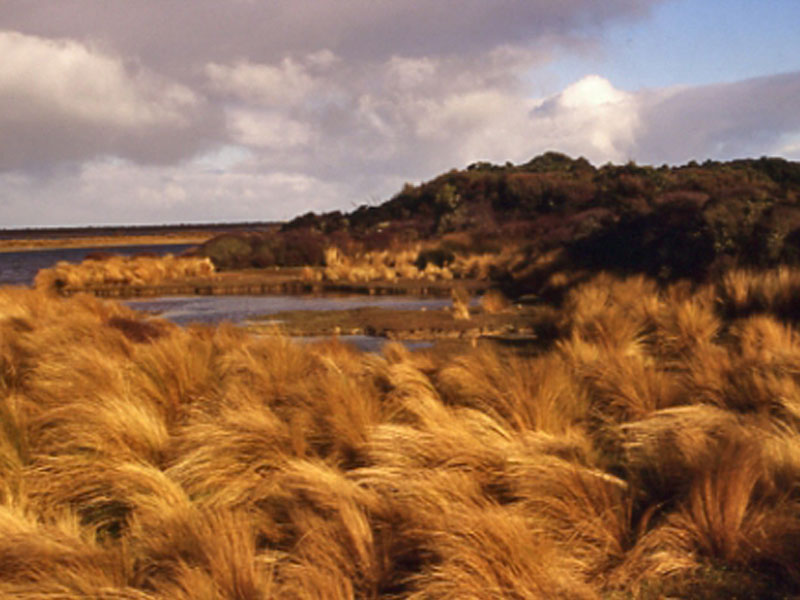
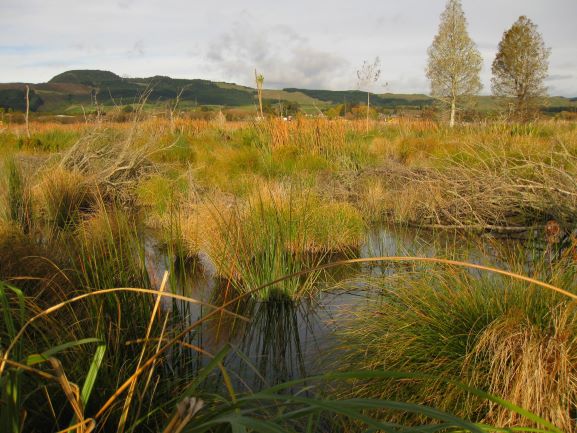
Swamps
Swamps are fertile wetlands that occupy basins, valley floors, deltas, and plains. They are fed by both groundwater and abundant surface runoff so receive a regular supply of nutrients and sediments from adjacent land.
Typical plants include sedges, rushes, reeds, flax, tall herbs, or manuka, often intermingled, and also forest trees such as kahikatea, pukatea, swamp maire (maire tawake), and cabbage trees (ti kouka). Extensive swamps occur at Whangamarino in the Waikato and at Mangarakau in Golden Bay. Raupo (bullrush) is a common plant in very fertile swamps.
Estuaries
Estuaries are embayments where freshwater flows into intertidal areas, resulting in a mix of fresh, salt and brackish water. In northern New Zealand mangroves are the dominant plant, but where frost restricts their distribution, sea rush and oioi form extensive swards.
At estuary edges, or within the influence of wind borne salt spray, wave splash, or groundwater intrusion, are salt meadows with tiny herbs including shore primrose, saltwort, remuremu, bachelor’s button and the rare Maori musk, edged by taller manuka, flax and marsh ribbonwood. Estuarine mudflats are vital habitat for thousands of migratory and resident wader birds.
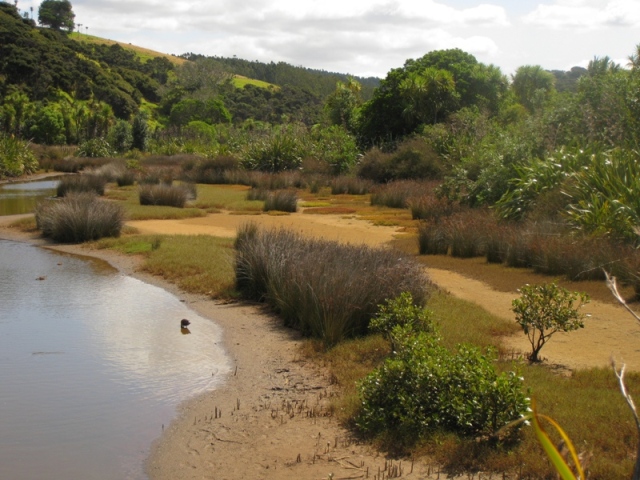
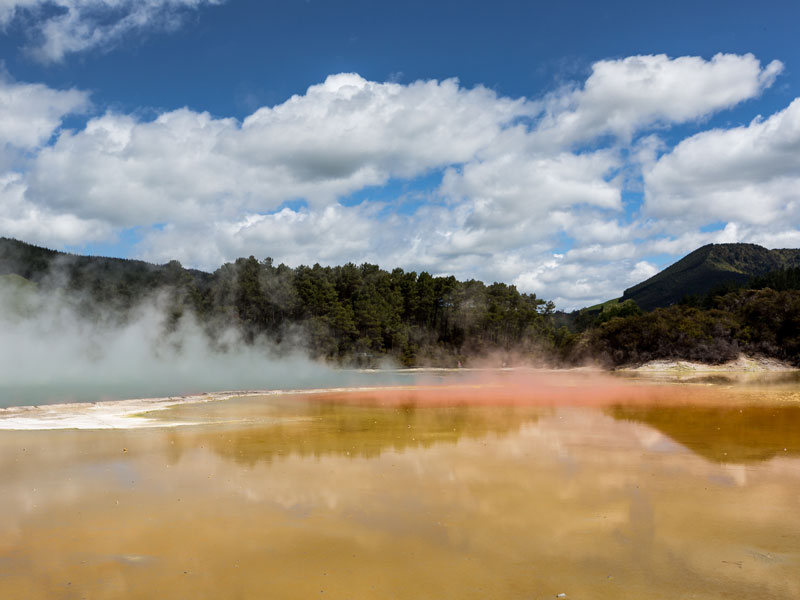
Geothermal wetlands
Geothermal wetlands are influenced by superheated water and / or mud, hot springs, thermal streams and geyser runoff sites.
The classic geothermal wetland plant is the fern Cyclosorus, which typically grows in tropical areas but survives in the warm, steamy environment of New Zealand’s geothermal wetlands. Geothermal wetlands occur in the Waikato and Bay of Plenty regions.
Lacustrine wetlands
Lacustrine wetlands are associated with lakes, ponds and their margins. Vegetation includes submerged macrophytes (large leafed plants), suspended diatoms and algae, or floating ferns or herbs.
Edge vegetation includes tall reedlike plants such as club rush, giant rush, raupo, and jointed twig rush. Lakes can be associated with peat such as Rotopiko/Lake Serpentine in the Waikato, sand dunes such as Lake Wainamu in west Auckland, lagoons like Lake Ellesmere in Canterbury, impounded rivers including the Waikato hydro lakes, volcanoes such as the Rotorua lakes, or glaciers such as the Tekapo basin and Nelson lakes.
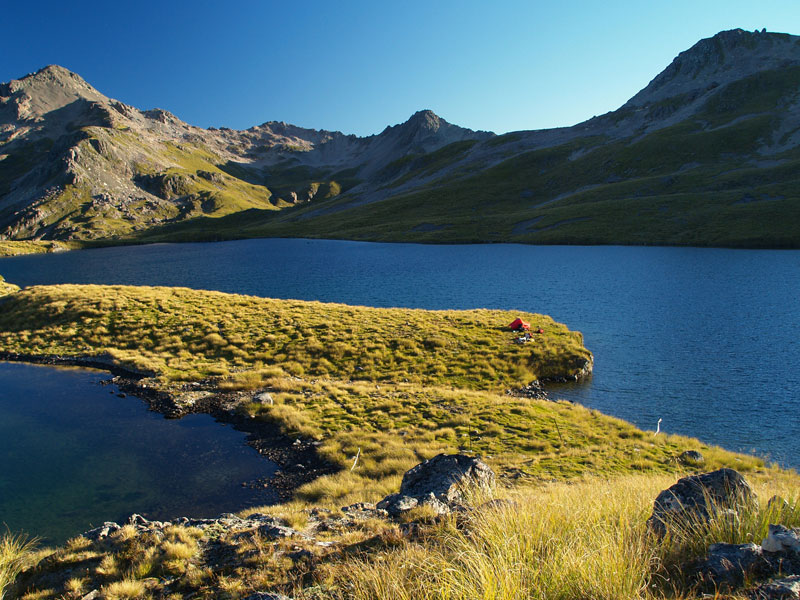
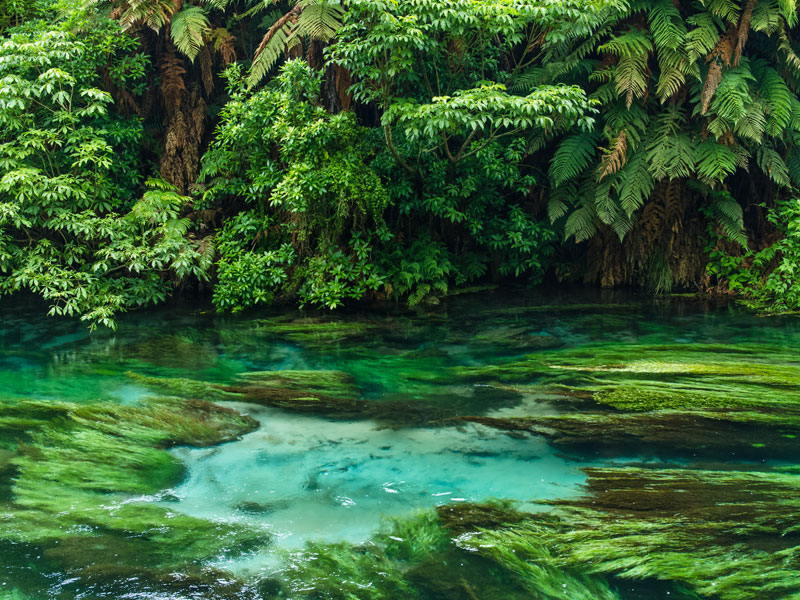
Riverine wetlands
Riverine wetlands are associated with flowing water in rivers or streams. They include beds that support algae and submerged aquatic plants, temporary wet areas of braided rivers where black stilts feed, and swampy backwater wetlands behind river levees.
The cool, clear water of the Blue Springs in the Waihou River near Putararu in the Waikato Region supports abundant submerged aquatic plants.
Plutonic wetlands
Plutonic wetlands are underground waterways. Being too dark for plants to grow, they are inhabited by fungi, microbes, insect larvae, and some fish species.
They occur mainly as caves and underground streams in limestone country, but also as caves in lava tubes, and as aquifers. Such wetlands are best viewed on guided cave tours such as in Waitomo and Takaka.
There is also a range of smaller scale specialised wetland types throughout New Zealand including ephemeral (temporary) wetlands and nival (snow–derived wetlands).
Find out about New Zealand’s internationally significant wetlands.
